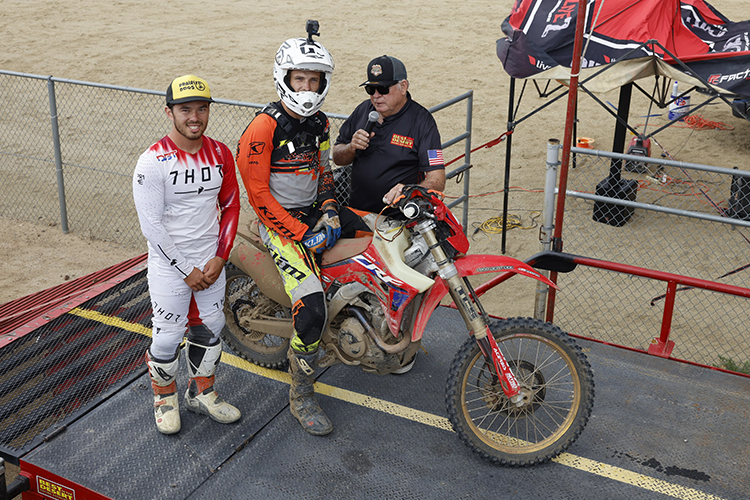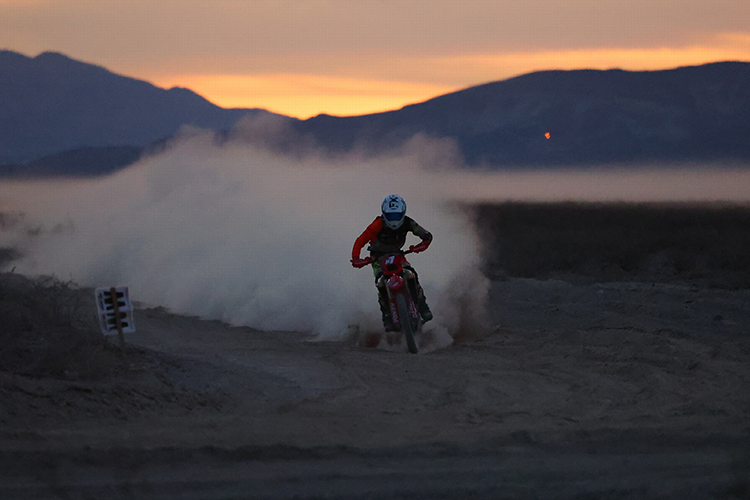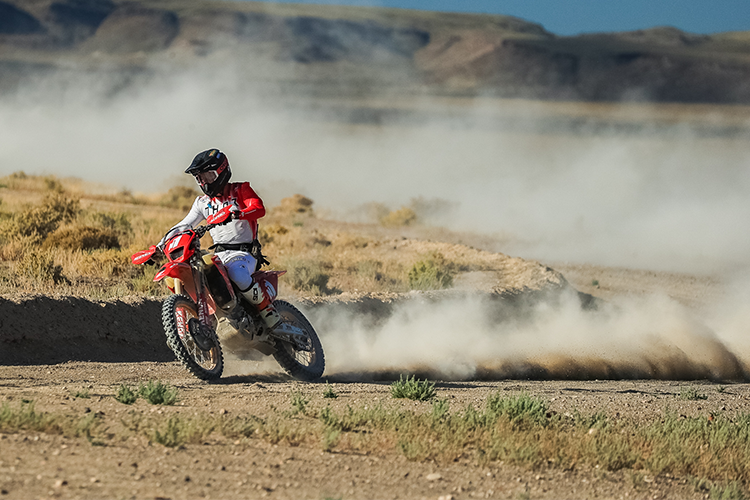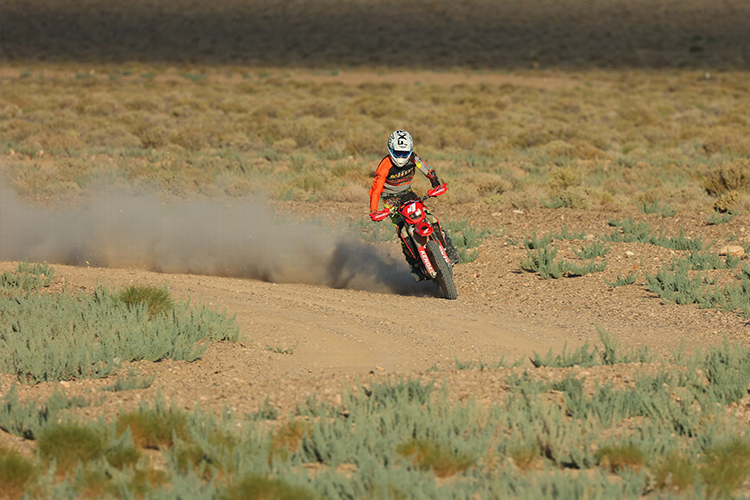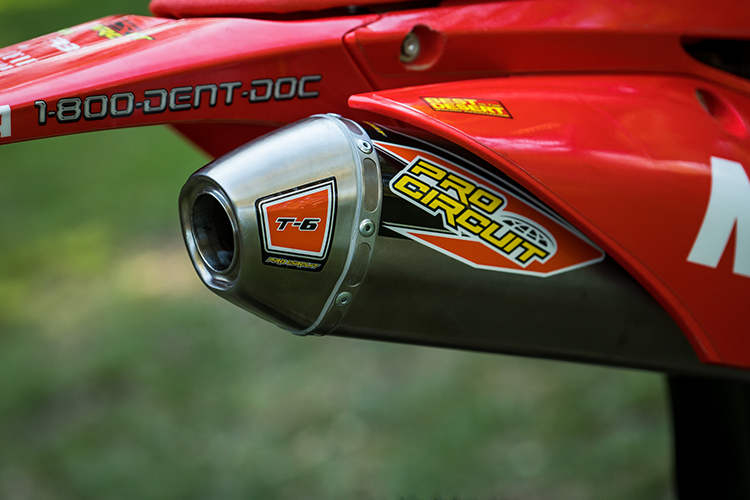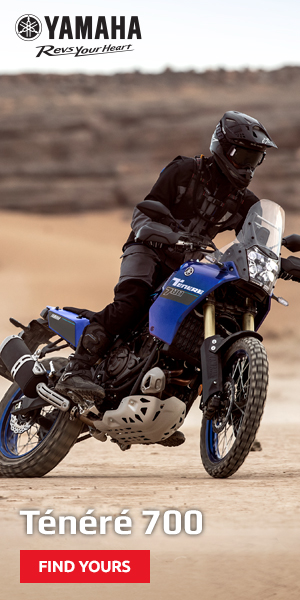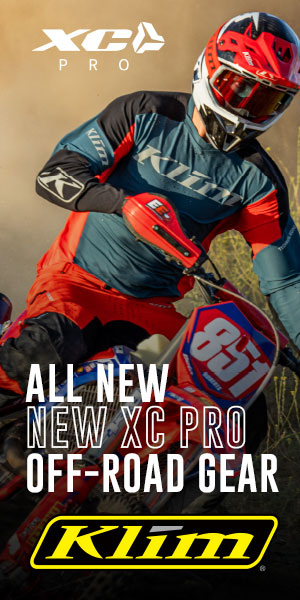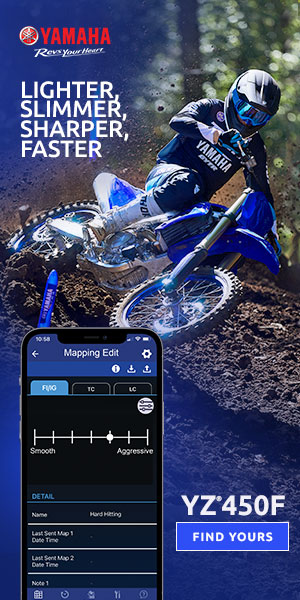It’s been a little bit of a rocky road getting to this point as we’ve tried to learn from and build our Honda CRF450X into a competitive racer at what might possibly be the toughest desert racing series to do so. Competing at the highest level in the Open Pro class, racing the Best In The Desert championship largely revolves around having a fast bike. Much of the race courses are very smooth and don’t tax a bike’s handling characteristics, but rather how much power it can put to the ground and do so effectively. With some struggles inflicted on our own, and others due to freak mechanicals/problems, it’s been a rollercoaster of a ride to get to the start of the longest single day off-road in the United States, the Casey Folks Vegas To Reno.
After working a lot of kinks out and feeling confident in our package, we set out with a goal to win the big one and start out the Best In The Desert series in a positive way. The race started out with Time Trials two days before race day, and we were able to secure the second starting position after a few mistakes slowed our pace in the daring qualifying run.
In previous years, we’ve struggled with our maintenance pit stops with wheel changes gone wrong and some faulty mechanic work at some points. Thus, with Honda’s gen two 450X air filter design being more difficult and time consuming to change than the KTM we’ve grown accustomed to, we made the critical decision to try running a filter skin to avoid a filter change during the race. With it all set up, we made practice runs and were able to pull the skin 10+ times the day before the race. In the end, it cost us much more than we gained…
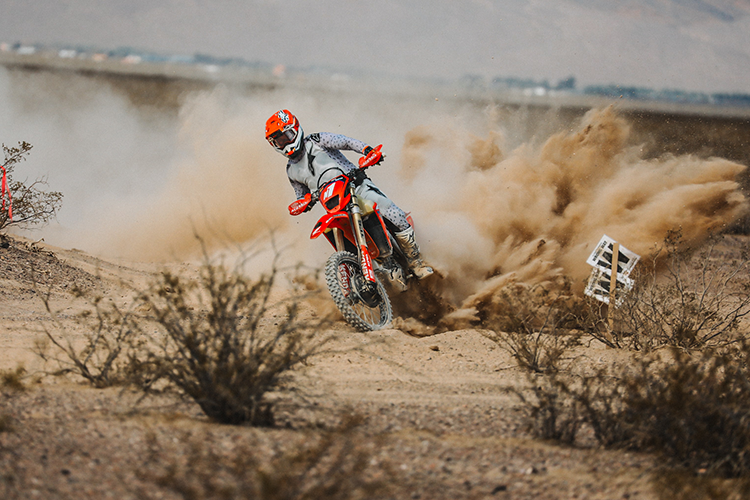
Typical of BITD races, the first bike left at the crack of dawn, 5:45 am Friday morning from Amargosa Valley, NV. Our 450X took off one minute behind, and over the first ~50 miles, we struggled with hanging dust and lost some time to the leader. Over the next ~100 miles, we continued to lose some time to the lead bike and looking at our GPS, noticed we were down on power as we struggled to hit triple digit speeds. The first thing that came to mind is the filter skin restricting much needed airflow to sustain those high speeds, so we tried to remove it while dumping gas at a pit. Of course, as we went to pull the skin, it got caught and was stuck in the airbox, continuing to restrict air flow. We continued to ride the bike like this up until ~260 miles into the race, where we also struggled with some front brake issues. In the pits, we’d have to push the caliper in and back bleed the brake to build some pressure, but would slowly lose it as the miles clicked down.
At the halfway point, we made the decision to perform our full service pit stop including a rear wheel change, air filter change, and front brake pad change all in hopes of getting our bike running to its true potential. The wheel and air filter changes went seamless, something we practiced a lot in the leadup to the race, but the front pad change was a disaster with the retaining clips falling out and a hot caliper to handle. After a nearly 5 minute long pit, we were finally back on track, but nearly 10 minutes down.
Although we lost a fair amount of time in the process, it paid dividends down the line as our bike performed flawlessly all the way to the finish. Our bike was hitting 106+ mph, we experienced no brake fade, and we made up minutes from pit to pit on the lead bike. In the end, we brought the gap down from just under ten minutes to one minute in the last two hundred miles of the race, proving just how capable this bike truly is.
While it’s taken a little bit of time and homework to get the power we’re looking for out of the engine, what has blown us away since day one is the bike’s handling. The heavy scale weight (288 lbs full of fuel) keeps the bike planted at high speeds and offers a level of comfort that is hard to find when racing at 100+ mph. At times, if we weren’t clocking speed on a GPS, we’d feel the bike is even slower than it actually is because it isn’t so violent and skaty at speed. It’s much more settled and doesn’t react to as much when the speeds increase. As we said before, for any racing other than this (and more so just at the highest level), this motor offers plenty of usable power and most wouldn’t come close to even using all of that power. For races like Hare and Hounds, Grand Prix’s, Sprint Enduro, etc. this motor is actually really good with tractable power and a well spaced six-speed transmission. 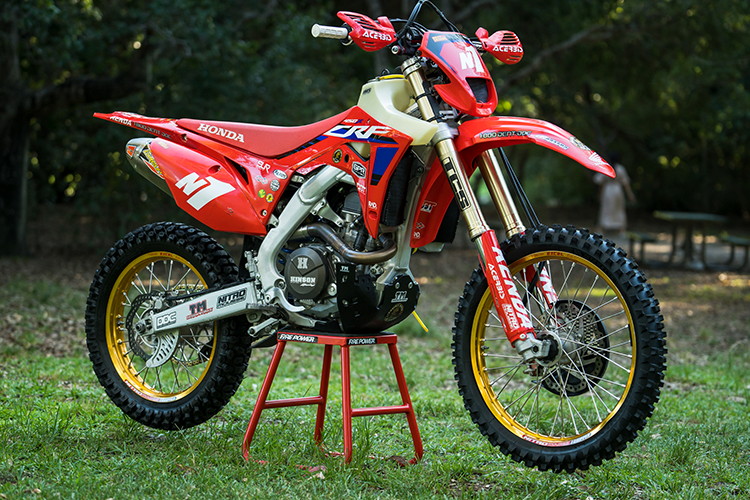
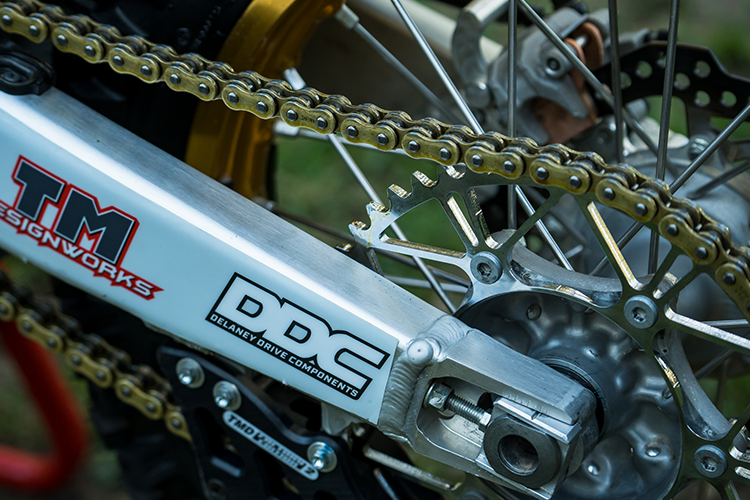
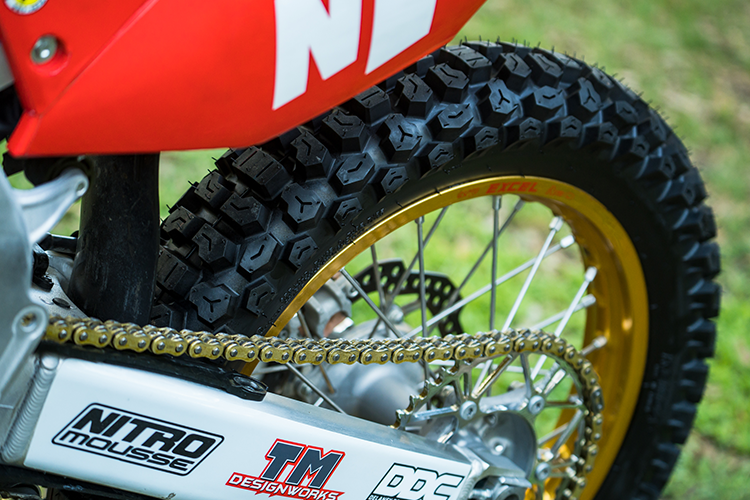
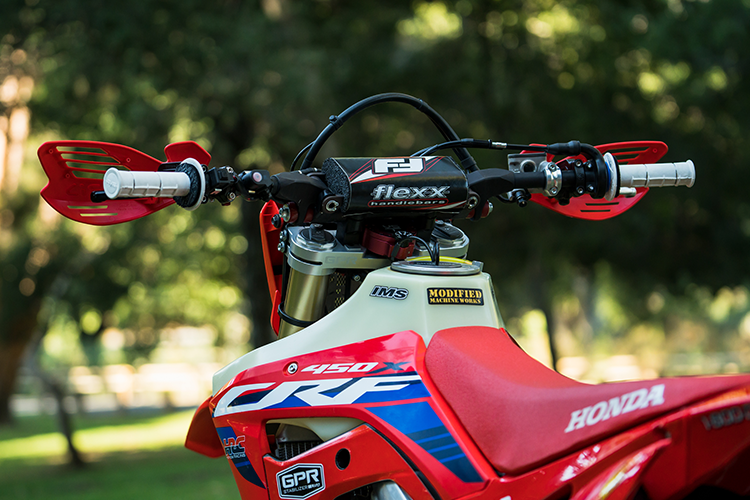
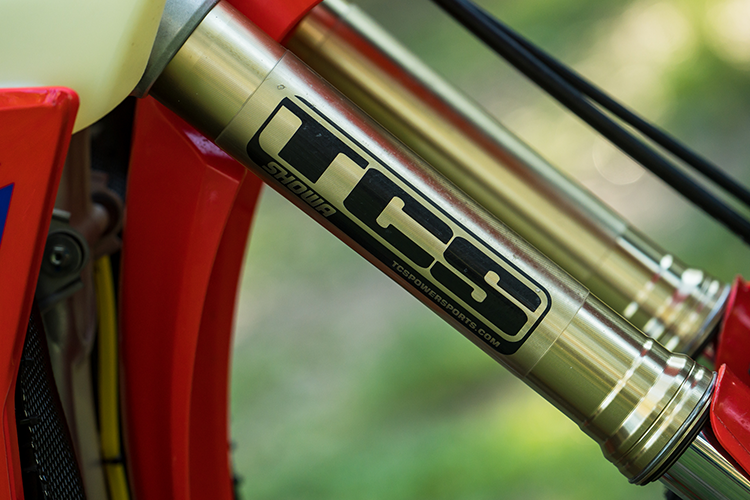
Thanks to those who support this effort!
American Honda, Prairie Dogs MC, 1-800-Dent-Doc, Kenda, TCS Powersports, GPR Stabilizer, Pro Circuit, IMS Products, Maxima USA, DDC Sprockets, TM Designworks, Bullet Proof Designs, Nitro Mousse, Modified Machine Works, Acerbis, RAD Custom Graphics
Do You Like DBT Bringing You Fresh Content? Search and Shop Through the Links Above or Below:
